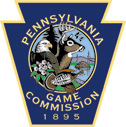PA Game Commission Advises Motorists To Watch For Deer

HARRISBURG – -(AmmoLand.com)- Pennsylvania Game Commission Executive Director Carl G. Roe today urged motorists to stay alert and slow down when driving after dusk and before dawn to reduce their risk of colliding with a white-tailed deer.
“Each spring, deer congregate on the grassy areas along the state’s busy highways, and cover greater distances in search of food,” Roe said. “This activity makes vehicle collisions with deer all but inevitable.
“For the sake of public safety, the Game Commission is asking motorists to watch for deer and to drive defensively after dark and before sunrise, which is when deer are most active. Your efforts can help to keep accidents to a minimum, which, in turn, will reduce or eliminate hardships to your family and other Pennsylvanians.”
Roe noted that being more knowledgeable about deer can help Pennsylvanians steer clear of a deer-vehicle collision. For instance, in spring, young deer – last year’s fawns – are on the move as does chase them away to prepare to give birth to this year’s fawns. Yearling does usually travel no farther than necessary and will often later reunite with the doe after her new fawns begin traveling with her. However, young bucks typically disperse farther to set up their own home range.
“Unfortunately, these young deer make tragic mistakes when crossing roads in spring and moving through areas unfamiliar to them,” said Roe. “They’re no longer following the leader, they’re moving independently. And that increases the potential for an accident, especially in areas harboring large deer populations.”
If a deer steps onto a road, Roe said, motorists should slow down and come to a controlled stop as soon as possible, and turn on their hazard flashers. Stopping may not be an option on busy highways, unless the driver can reach the shoulder of the road.
“Don’t risk trying to drive around a deer,” Roe said. “Since deer usually move in single file, more deer may be following, so you should stop, or at least slow down, to make sure all deer have passed.
“Also, deer sometimes abruptly reverse their direction right after crossing a road. This is a defensive mechanism that often kicks in when deer are startled, and they retrace their footsteps to other deer they’re traveling with or return to an area they’ve already checked for danger.”
Deer in northern counties spend a good deal of time in spring feeding on the tender shoots in grassy areas alongside busy highways. Motorists should slow down immediately whenever they see grazing deer along roads. While deer dining next to busy highways and interstates are often not bothered by the traffic, deer along rural roads seem less tolerant and are more edgy.
“The only thing predictable about whitetails is that they’re definitely unpredictable,” Roe said. “The moment you think you have them figured out, they start showing you something new.
“However, we also know that deer are creatures of habit. If you see a deer-crossing sign posted along a road you’re traveling, it’s a good idea to slow down especially around dawn and dusk. These signs are placed in areas where deer have been crossing roads for years. Ignoring these signs is asking for trouble.”
Drivers who hit a deer are not required to report the accident to the Game Commission. If the deer dies, only Pennsylvania residents may claim the carcass. To do so, they must call the Game Commission for a permit number within 24 hours of taking possession of the deer.
The permit number issued by the agency lets meat processors and law enforcement officials know that possession of the deer is legal, and not the result of poaching. Antlers from bucks killed in vehicle collisions must be turned over to the Game Commission.
If a deer is struck by a vehicle, but not killed, drivers are urged to stay their distance because some deer may recover and move on. However, if a deer does not move on, or poses a public safety risk, drivers are encouraged to report the incident to a Game Commission regional office or other local law enforcement agency. If the deer must be put down, the Game Commission will direct the proper person to do so.
Other tips for motorists:
- Stay alert and don’t count on deer whistles or deer fences to deter deer from crossing roads in front of you. Deer can’t hear ultrasonic frequencies and there is no scientific evidence that deer whistles are effective.
- Watch for the reflection of deer eyes and for deer silhouettes on the shoulders of roads. If anything looks slightly suspicious, slow down.
- Slow down in areas known to have a large deer population; where deer-crossing signs are posted; places where deer commonly cross roads or are struck by motorists; areas where roads divide agricultural fields from forests; and whenever in forested areas between dusk and dawn.
- Deer do unpredictable things. Sometimes they stop in the middle of the road when crossing. Sometimes they cross and quickly re-cross back from where they came. Sometimes they move toward an approaching vehicle. Assume nothing. Slow down, blow your horn to urge the deer to leave the road. Stop if a deer stays on the road; don’t try to go around it.
